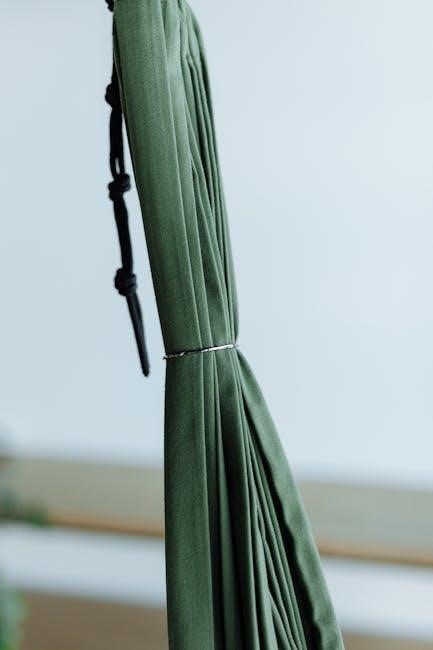
The Cobra Knot‚ also known as the Solomon Knot‚ is a popular and sturdy knot used in paracord crafts. It creates a textured‚ visually appealing pattern.
1.1 Definition and Overview
The Cobra Knot‚ also known as the Solomon Knot‚ is a resilient and visually appealing knot. It involves weaving two cords in a crisscross pattern‚ creating a sturdy and flexible design. Ideal for paracord projects‚ it’s commonly used in bracelets and survival gear; Its intricate texture enhances durability‚ making it a popular choice for both functional and decorative purposes. This knot is a favorite among DIY enthusiasts for its strength and aesthetic appeal.
1.2 Historical Background and Origins
The Cobra Knot‚ also known as the Solomon Knot‚ has deep roots in traditional knotting techniques. Its origins trace back to historical decorative and functional knot designs. Over time‚ it evolved into a popular choice for survival gear and DIY projects. The knot’s name suggests a connection to ancient symbolism‚ though its exact historical origins remain unclear. Its versatility and strength have made it a timeless favorite in modern applications.
1.3 Importance and Relevance in Modern Applications
The Cobra Knot is highly valued in modern applications for its strength and aesthetic appeal. Widely used in paracord crafts‚ survival gear‚ and outdoor activities‚ it offers durability and reliability. Its popularity in DIY projects and fashion accessories highlights its versatility. The knot’s ability to secure loads effectively makes it essential for climbing and emergency situations. Its relevance continues to grow as a practical and stylish solution in various fields.
Materials and Tools Needed
To create a Cobra Knot‚ you’ll need sturdy paracord‚ scissors‚ and a reliable surface for tying. Optional tools include a cord clamp or tape for stability.
2.1 Types of Cordage Suitable for the Cobra Knot
The Cobra Knot is most commonly tied using paracord‚ specifically 550 or 425 cord‚ known for its durability and flexibility. Nylon or polyester ropes also work well.
2.2 Essential Tools for Tying the Knot
To tie the Cobra Knot‚ you’ll need a reliable cutting tool‚ like a knife or scissors‚ to trim the paracord. A lighter or fire source is useful for melting the ends to prevent fraying. Optionally‚ a measuring tape or ruler can help measure cord lengths accurately. For more intricate designs‚ a cord needle or weaving tool can assist in tight spaces.
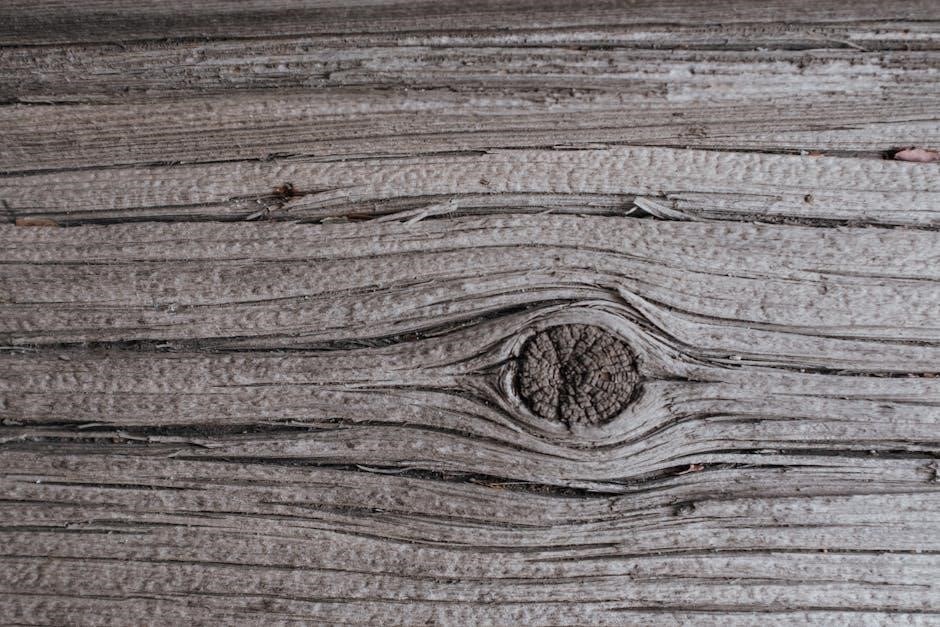
Step-by-Step Instructions
Start with a foundation knot‚ then cross the cords to form loops. Weave the strands through each loop‚ tighten carefully‚ and repeat for desired thickness. Patience is key.
3.1 Preparing the Cord
Begin by cutting a suitable length of paracord or cordage. Melt the ends with a lighter to prevent fraying. Fold the cord in half‚ forming two strands. Align the strands evenly and lay them flat on a stable surface. Ensure the cord is free from twists or tangles for a smooth start. This preparation step is crucial for achieving symmetry and ease in tying the Cobra Knot.
3.2 Creating the Initial Loops
To create the initial loops‚ fold the prepared cord in half and tie a small loop at the folded end using a temporary knot. Secure the loop to a stable object or pin it down. Pass the working ends through the loop from opposite sides‚ ensuring the cord lies flat and evenly. This step establishes the foundation for the Cobra Knot’s signature pattern. Keep the loops aligned to maintain symmetry.
3.3 Weaving the Knot
Begin weaving by crossing the working ends over the base‚ then pass each end through the opposite loop from the same side. Alternate the direction of the weave with each pass‚ ensuring the cord lies flat. Tighten each strand gradually to avoid distortion. Use a bodkin or similar tool to guide the cord through the loops for precision. Maintain consistent tension to achieve a secure and symmetrical pattern.
3.4 Tightening and Securing the Knot
Once woven‚ pull each strand gently to tighten the knot evenly. Use a bodkin or similar tool to tuck excess cordage into the design. Trim the ends closely with scissors or a knife. Inspect the knot for any loose strands and adjust as needed. Apply a small amount of heat from a lighter to seal the cut ends‚ preventing fraying. Ensure the knot is snug and secure before finalizing.
Common Mistakes and Troubleshooting
Common errors include uneven tension‚ misaligned loops‚ and improper cord preparation. Regular inspection and adjustments ensure the knot’s stability and prevent structural issues during use.
4.1 Identifying Errors in the Knot Structure
Recognizing flaws in the Cobra Knot is crucial for its reliability. Common mistakes include uneven tension‚ misaligned loops‚ and improper cord preparation. These errors can weaken the knot’s structure. Checking for symmetrical overlaps and consistent tightening helps ensure integrity. Correcting these issues early prevents failures in load-bearing applications‚ making the knot safe and durable for various uses.
4.2 Adjustments for a Secure Hold
Ensuring a secure hold with the Cobra Knot involves precise adjustments. Tightening evenly and aligning loops are key. Using tools like a paracord needle can help. Regular practice and referring to diagrams improve consistency. A well-adjusted knot enhances durability and reliability‚ making it ideal for climbing and camping. Proper tension ensures it withstands stress without loosening‚ providing a trustworthy solution in critical situations.
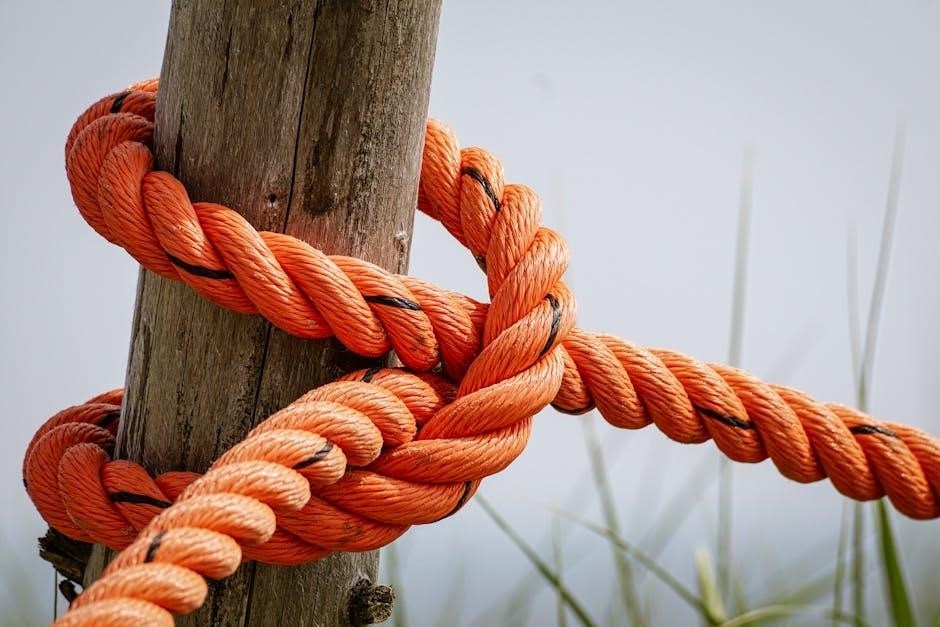
Variations of the Cobra Knot
The Cobra Knot has variations like the Double Cobra Knot and decorative patterns. These variations enhance strength‚ texture‚ or visual appeal‚ making them versatile for functional and stylish uses.
5.1 Double Cobra Knot
The Double Cobra Knot is a variation that adds an extra layer of security and texture. By weaving the cord through the base knot twice‚ it creates a stronger‚ more robust design. This variation is ideal for applications requiring enhanced grip or durability. Popular in both functional and decorative projects‚ the Double Cobra Knot offers versatility for survival gear‚ bracelets‚ and other paracord creations.
5.2 Decorative Cobra Knot Patterns
The Cobra Knot’s decorative patterns are highly sought after in fashion accessories like bracelets and jewelry. Its intricate design allows for customization with various colors and cord types‚ making it visually appealing. This knot’s versatility makes it ideal for both decorative and functional purposes‚ providing a stylish yet durable solution for paracord projects.
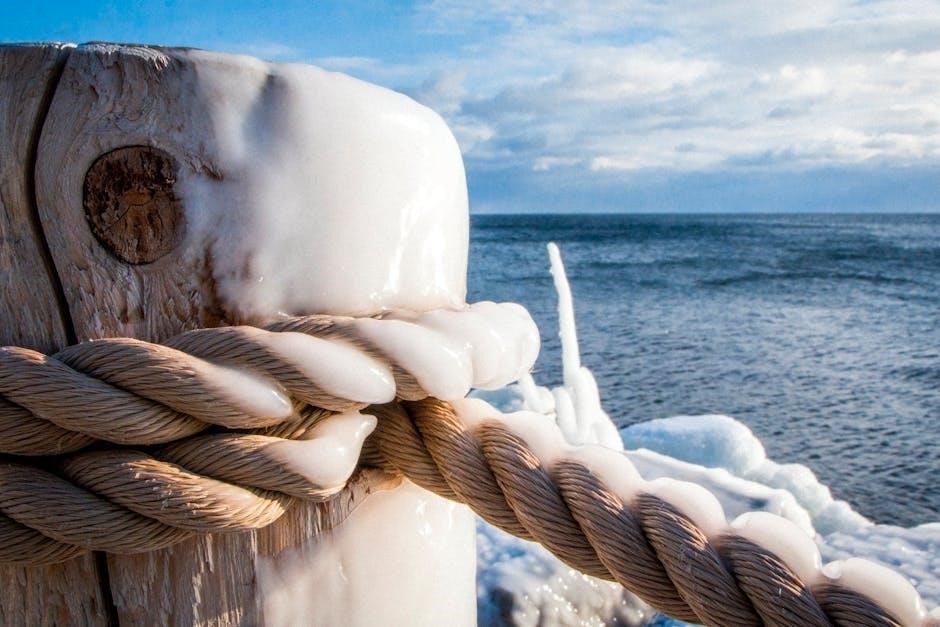
Practical Applications
The Cobra Knot is widely used in climbing‚ camping‚ and emergency situations due to its strength and reliability‚ making it ideal for securing gear and creating stable lines.
6.1 Climbing and Mountaineering
The Cobra Knot is a favorite among climbers for its strength and reliability. It is often used to secure ropes‚ create anchors‚ and set up belay systems. The knot’s stability under tension makes it ideal for high-stakes environments. Climbers rely on it for rappelling and ascending‚ ensuring safety and durability in critical situations. Its versatility and ease of tying make it a staple in every climber’s toolkit.
6.2 Camping and Outdoor Activities
The Cobra Knot is invaluable in camping for securing tents‚ hanging gear‚ and creating makeshift pulleys. Its strength and reliability make it perfect for outdoor tasks. Campers use it to organize equipment and create durable ties. The knot’s simplicity and effectiveness ensure it’s a must-have skill for wilderness adventures‚ helping to keep gear secure and within reach. Its versatility enhances camping experiences‚ offering practical solutions for various challenges faced in the great outdoors.
6.3 Emergency Situations
The Cobra Knot’s reliability and quick-tying nature make it indispensable in emergencies. It’s often used in search and rescue operations for securing loads or creating tow lines. In survival scenarios‚ the knot can help set up shelters‚ secure injured individuals‚ or create splints. Its strength and versatility ensure it’s a critical skill for emergency response‚ providing a secure and efficient solution when time is of the essence.
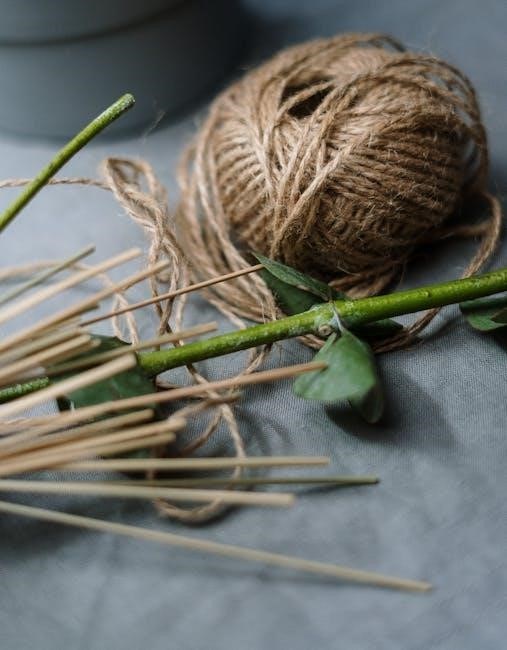
Cobra Knot in Paracord Projects
The Cobra Knot is widely used in paracord projects‚ offering a sleek‚ durable design. It’s a favorite for bracelets and accessories‚ combining style with functionality‚ perfect for crafters and survivalists.
7.1 Incorporating the Cobra Knot in Bracelets
Incorporating the Cobra Knot into bracelets adds both style and functionality. It creates a textured‚ visually appealing design while maintaining durability. Paracord bracelets with this knot are popular for their versatility‚ making them ideal for both fashion and survival gear. The Cobra Knot’s structure allows for easy adjustment‚ ensuring a comfortable fit. Many crafters prefer this knot for its aesthetic appeal and practical benefits‚ making it a staple in paracord accessories.
7.2 Using the Cobra Knot in Survival Gear
The Cobra Knot is highly valued in survival gear for its strength and reliability. It is often used in creating durable straps‚ handles‚ and securing points. The knot’s tight weave ensures minimal slippage‚ making it ideal for high-stress applications. Survivability enthusiasts appreciate its versatility‚ as it can be integrated into emergency shelters‚ backpacks‚ and rescue equipment. This knot’s performance under harsh conditions makes it a crucial element in wilderness survival tools‚ enhancing safety and functionality.
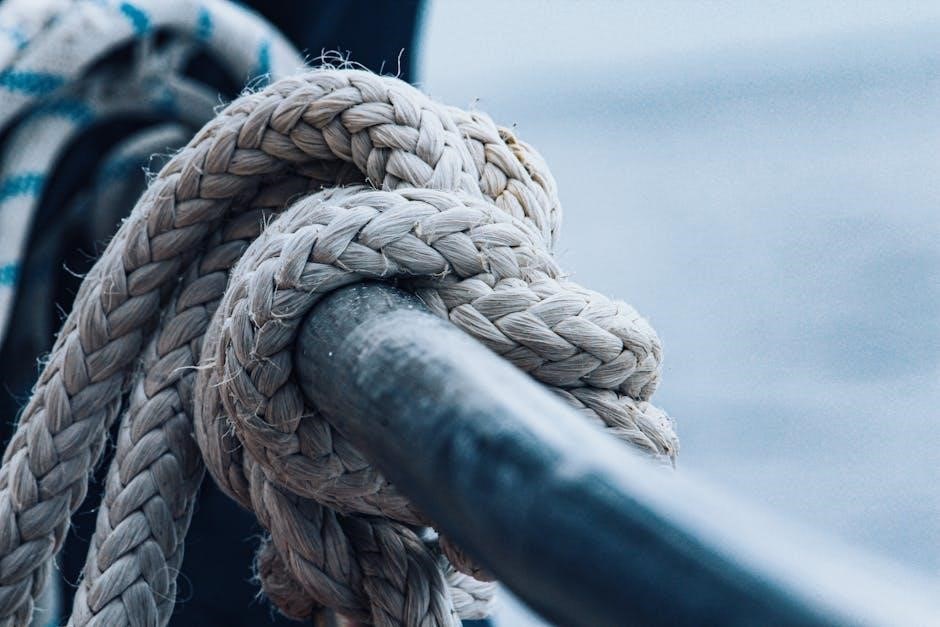
PDF Resources and Guides
Find detailed Cobra Knot guides in PDF format online. Websites like paracordweavers.com offer instructional downloads. Search forums and crafting communities for reliable resources to master the knot.
8.1 Popular Cobra Knot Instructional PDFs
Popular Cobra Knot PDF guides are widely available online‚ offering step-by-step tutorials. Many feature detailed visuals and diagrams to simplify learning. Websites like Instructables and ParacordWeavers provide comprehensive resources. These PDFs often include tips for mastering the knot and customization ideas. They are ideal for beginners and experienced crafters alike‚ ensuring a clear understanding of the Cobra Knot’s structure and applications.
8.2 Where to Download Reliable Guides
Reliable Cobra Knot guides can be downloaded from trusted sources like Instructables and ParacordWeavers. These platforms offer high-quality PDFs with clear instructions and visuals. Additionally‚ websites like CCC and educational repositories provide access to detailed manuals. Ensure to verify the credibility of the source before downloading to guarantee accurate and safe instructions for mastering the Cobra Knot.
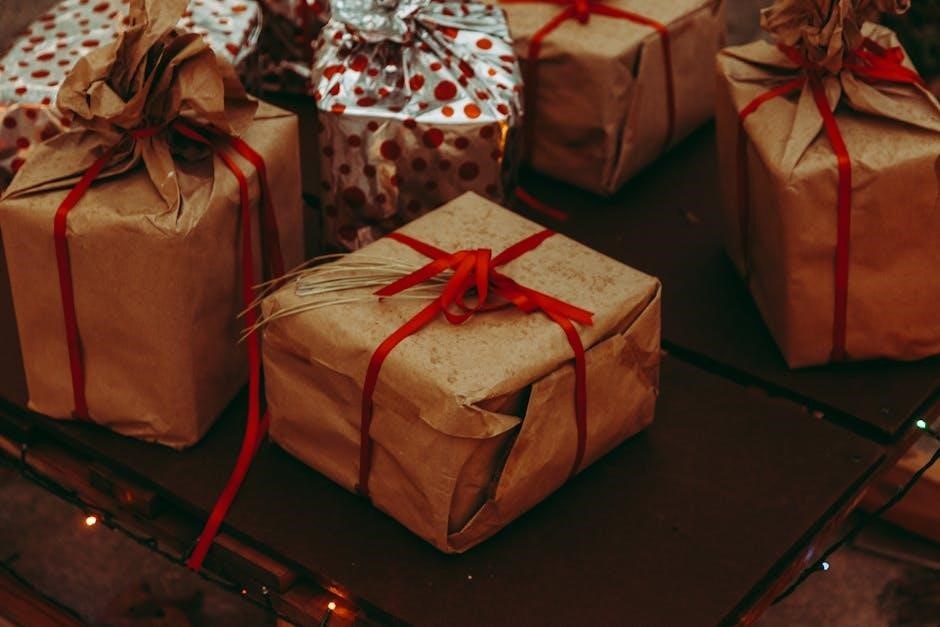
Visual Aids and Diagrams
Visual aids like diagrams are essential for mastering the Cobra Knot. Step-by-step illustrations from trusted sources like Instructables simplify the learning process for beginners and experts alike.
9.1 Importance of Visual Instructions
Visual instructions are crucial for learning the Cobra Knot‚ as they provide a clear‚ step-by-step guide. Diagrams and images help users understand complex movements and prevent errors. According to Paracord Weavers‚ visual aids simplify the process‚ making it accessible for beginners. They also ensure consistency‚ which is vital for securing the knot properly. These resources are widely available in PDF guides‚ enhancing the learning experience significantly.
9.2 Recommended Diagrams for Learning
Detailed‚ high-quality diagrams are essential for mastering the Cobra Knot. Look for step-by-step illustrations that break down each stage‚ from initial loops to final tightening. Color-coded or labeled diagrams can enhance understanding. PDF guides often include these visuals‚ making complex steps easier to follow; Websites like Paracord Weavers and Instructables offer excellent resources. These diagrams ensure accuracy and confidence in tying the knot correctly.
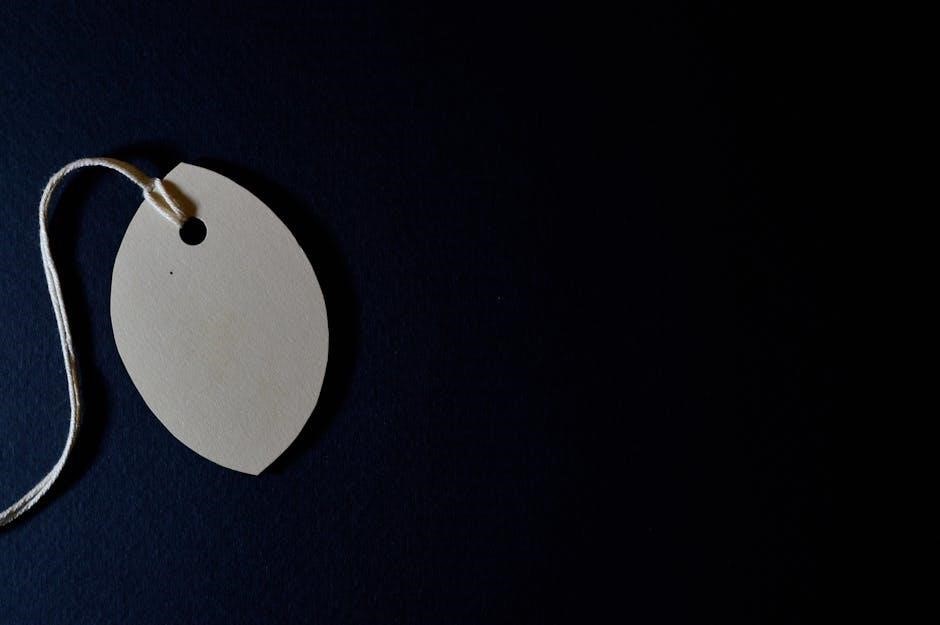
Practice and Mastery
Consistent practice is key to mastering the Cobra Knot. Start with simple projects‚ gradually increasing complexity. Patience and repetition will refine your technique‚ ensuring secure and neat knots.
10.1 Tips for Beginners
Mastering the Cobra Knot starts with patience. Begin by practicing with longer cords to easily manipulate loops. Use a stable surface to lay out the cord‚ ensuring even tension. Break the process into smaller steps‚ focusing on one loop at a time. Watch video tutorials to visualize the process‚ and don’t hesitate to restart if mistakes occur. Consistency builds skill‚ so practice regularly to achieve perfect knots every time.
10.2 Achieving Proficiency
Achieving proficiency in tying the Cobra Knot requires consistent practice and attention to detail. Start with shorter cords to improve dexterity and speed. Experiment with different materials to understand how they behave. Pay close attention to tension while weaving the knots to ensure a secure hold. Regular practice helps develop muscle memory‚ allowing the process to become second nature. Over time‚ you’ll master the technique and tie perfect Cobra Knots effortlessly.
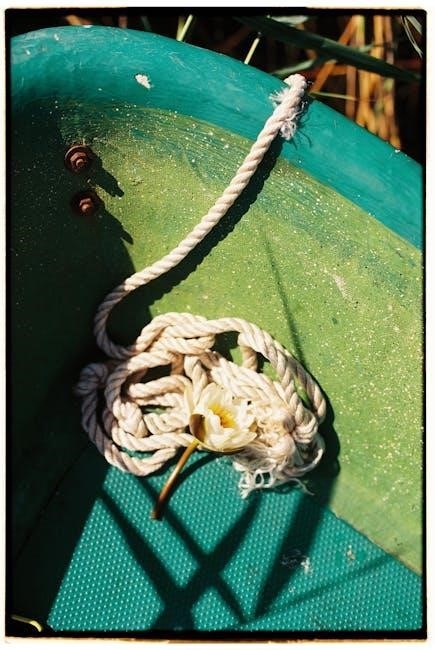
Safety Considerations
Always inspect the Cobra Knot before use to ensure it’s secure. Avoid using damaged or frayed cords‚ as they can compromise the knot’s strength and reliability.
11.1 Load-Bearing Safety
When using the Cobra Knot in load-bearing applications‚ ensure the cordage is rated for the expected weight. Regularly inspect for wear and tear. Avoid using near sharp edges or heat sources‚ as these can weaken the material. Properly tighten the knot to prevent slippage under stress. Always test the setup with a minimal load before applying full weight to guarantee reliability and safety.
11.2 Inspection and Maintenance
Regularly inspect the Cobra Knot for signs of wear‚ such as fraying or discoloration. Check that all loops are evenly tightened and free from twists. Clean the cordage periodically to remove dirt or debris. Store the knot in a cool‚ dry place to prevent degradation. Replace any damaged cordage immediately to maintain the knot’s integrity and ensure long-term reliability and performance.
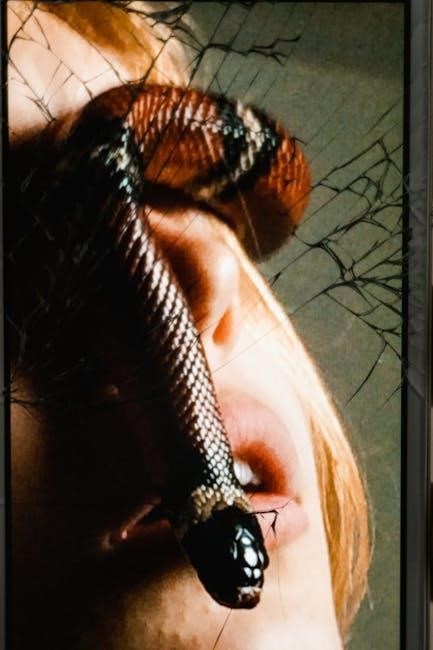
Alternatives to the Cobra Knot
Explore the Prusik Knot for climbing and securing loads‚ or the Figure Eight Knot for reliable stopper and joining applications‚ offering unique strengths in various situations.
12.1 Prusik Knot
The Prusik Knot is a reliable alternative to the Cobra Knot‚ ideal for climbing and securing loads. It functions as a friction hitch‚ allowing easy adjustment and release. Unlike the Cobra Knot‚ it excels in ascending ropes and creating temporary anchors. Simple to tie and untie‚ the Prusik Knot is a practical choice for emergency situations‚ offering a secure hold on ropes without causing damage. It’s a versatile option for climbers and outdoor enthusiasts seeking a dependable knot.
12.2 Figure Eight Knot
The Figure Eight Knot is a widely recognized climbing knot known for its reliability and simplicity. It’s often used to secure ropes to harnesses or anchors‚ providing a strong and easily inspected connection. Unlike the Cobra Knot‚ the Figure Eight Knot is primarily a stopper knot‚ preventing ropes from running through pulleys or other equipment. Its symmetrical design makes it both visually distinct and easy to remember‚ enhancing safety in critical situations. It’s a fundamental skill for climbers and adventurers.
Advanced Techniques
Advanced techniques involve customizing the Cobra Knot for enhanced functionality‚ such as combining it with other knots for added security or integrating it into complex cord designs.
13;1 Combining Knots for Enhanced Security
Combining the Cobra Knot with other knots‚ like the Prusik or Figure Eight‚ enhances security in load-bearing applications. This integration strengthens the overall structure‚ making it ideal for climbing or search-and-rescue scenarios. By adjusting the cordage and ensuring proper tension‚ users can create a highly reliable system. This technique is particularly useful in situations requiring maximum stability and safety‚ offering versatility for advanced cord management and survival scenarios.
13.2 Customizing the Cobra Knot
Customizing the Cobra Knot allows for personalization and functional enhancements. By incorporating beads‚ colored paracord‚ or additional loops‚ users can tailor the knot’s appearance and utility. Experimenting with different cord materials or weaving patterns can also add uniqueness. This customization makes the Cobra Knot versatile for both practical and decorative purposes‚ ensuring it meets specific needs while maintaining its signature strength and style.
Frequently Asked Questions
Common queries include troubleshooting‚ best materials‚ and practical uses. Beginners often ask about tightening the knot securely and avoiding common mistakes during the weaving process.
14.1 Common Queries About the Cobra Knot
Many ask about simplifying the Cobra Knot for beginners‚ troubleshooting loose strands‚ and selecting the best cord types. Others inquire about its suitability for load-bearing tasks and how to avoid common tying errors. Some seek tips on tightening evenly and adjusting the knot’s size. Additionally‚ questions arise about its use in survival gear versus decorative projects. Answers often emphasize practice and proper technique.
14.2 Expert Answers and Clarifications
Experts clarify that the Cobra Knot is ideal for creating sturdy‚ adjustable loops. They recommend using high-quality paracord for durability and tight‚ consistent weaving to ensure security. Troubleshooting tips include checking for even tension and avoiding overly loose strands. Clarifications emphasize that while the knot is strong‚ it’s not suitable for heavy load-bearing without reinforcement. Practice and patience are key for mastering its tying process. Additionally‚ experts suggest consulting detailed PDF guides for precise step-by-step visuals.
Mastery of the Cobra Knot offers both functional and aesthetic appeal. Its versatility in paracord projects and practical applications makes it a valuable skill for enthusiasts. Keep practicing!
15.1 Summary of Key Points
The Cobra Knot‚ or Solomon Knot‚ is a versatile and popular design in paracord crafting. It’s easy to learn and creates a sleek‚ textured pattern. Ideal for bracelets‚ survival gear‚ and decorative items‚ this knot offers both functionality and aesthetic appeal. With proper materials and practice‚ anyone can master it‚ making it a valuable skill for enthusiasts seeking practical and creative applications.
15.2 Encouragement for Further Practice
Mastering the Cobra Knot opens doors to creative and practical applications. With consistent practice‚ you’ll gain confidence in tying it securely and efficiently. Explore its use in bracelets‚ survival gear‚ and decorative items to enhance your skills. Remember‚ patience and repetition are key to perfection. Keep experimenting and soon you’ll create stunning‚ functional pieces with ease!